There are many different types of sugar available for baking, and it can all be a bit confusing and overwhelming. Let’s take a look at the most common types of sugar and their uses in baking. Whether you’re a beginner baker or a seasoned expert, read on for all you need to know about sugars for baking!

Baking with Sugar
There’s a reason sugar is one of the main ingredients in baking – it does a lot! Let’s take a look at what sugar does in baking and how to use it to get the best results. We’ll also discuss different types of sugar and their uses. So, if you’re curious about sugar and its effects on baked goods, keep reading!
Before we get started, please know that this information is geared toward traditional bakers like me. While there are many specialty sugars as well as sugar alternatives for special diets, I have very little first-hand knowledge of or experience with them. Let’s look at the most common types of sugar and their uses in baking.
What Sugar Does in Baking
Sugar is a key ingredient in baking for several reasons, not just for adding sweetness. First, sugar helps to tenderize baked goods by slowing down gluten production. This process also makes baked goods more moist and gives them a softer texture.
How often have you mixed sugar with softened butter? Lots, right? That process is called creaming and serves to incorporate air into the mixture, creating little air pockets that expand while baking. That means your baked goods rise nicely.
Sugar also plays an important role in the browning of baked goods. When sugar is heated, it caramelizes and creates the desirable brown color on the surface of many baked goods. You may have heard this referred to as the Maillard reaction.
In addition, sugar serves as a stabilizer in beaten egg foams. When you’re beating egg whites for a meringue or a foam cake, the addition of sugar helps the eggs hold air bubbles so that the end result is a stiffer, more stable foam.
Now that we know what sugar does in baking, let’s take a look at the different types of sugar available to home bakers.
Sugar is a Wet Ingredient
Well, it’s really a dry ingredient. But for the purposes of baking, sugar is a wet ingredient. The thing that makes the differentiation here is that sugar is hygroscopic, meaning it absorbs water from its surrounding environment. Mixing it with other wet ingredients lets it absorb some of that liquid. Then, the flour doesn’t grab hold of too much of the liquid and go crazy making gluten, which can lead to tough, dry baked goods.
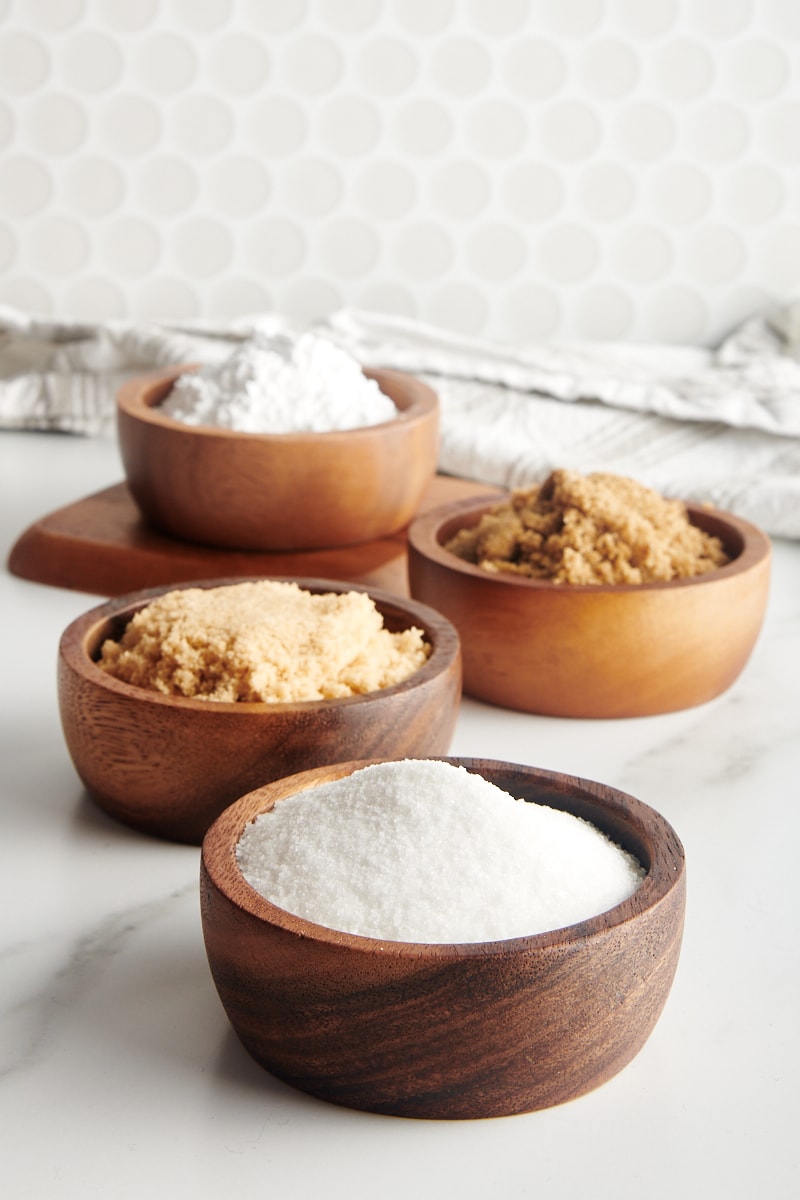
The Most Common Types of Sugar
There are several types of sugar that are commonly used in baking. While they all start from the same point, differences in processing and refining create variations that make each type of sugar unique. The three most common types are granulated sugar, brown sugar, and confectioners’ sugar.
Granulated Sugar
Granulated sugar, also called white sugar or table sugar, is the most common sugar used in home baking. If a recipe simply lists “sugar” as an ingredient, granulated sugar is likely the intended sugar to be used.
Granulated sugar is made from sugar cane or sugar beets and is refined to create a white, crystalline powder. This refining process also produces molasses. Granulated sugar has been further processed to remove the molasses. It is sometimes bleached as well to make it whiter.
This type of sugar dissolves well and is often used not only in baked goods but also in frostings and fillings.

Brown Sugar
Brown sugar is a refined sugar with molasses coating the crystals. The molasses gives brown sugar its characteristic brown color and slightly sticky texture. Most modern processes for making brown sugar involve adding molasses to refined white sugar.
The color of brown sugar is an indication of how much molasses has been added. Light brown sugar has less, while dark brown sugar has more. Learn more: Light vs Dark Brown Sugar
Brown sugar generally has a higher moisture content and a more intense flavor than granulated sugar. When substituting brown sugar for granulated sugar, the result will generally be moister. The higher moisture content also makes brown sugar more likely to clump. Learn more: How to Soften Brown Sugar
Confectioners’ Sugar
Confectioners’ sugar is also known as powdered sugar or icing sugar. This kind of sugar is made by grinding and sifting granulated sugar until it’s a fine powder. It also contains cornstarch to prevent the sugar from clumping. Unlike superfine sugar, which is also a finely ground sugar, confectioners’ sugar is not granulated.
This type of sugar is classified and named according to the number of times the sugar is ground. The most commonly used type by home bakers is 10X.
Confectioners’ sugar dissolves easily and is often used to make frostings, icings, and fillings. It can also be dusted on top of baked goods for decoration.
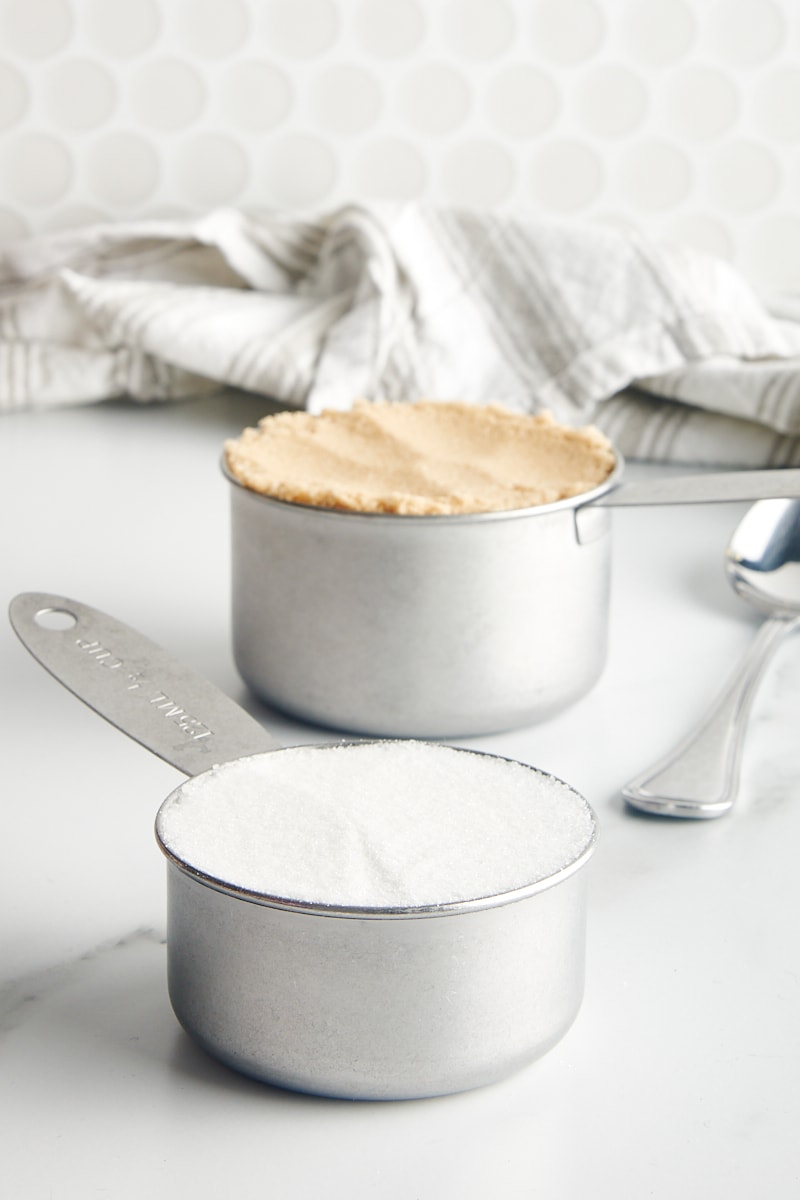
How to Measure Sugar
When measuring sugar, it’s important to use the right type of measuring cups. Despite the fact that we consider sugar to be a wet ingredient for mixing purposes, it’s measured as a dry ingredient.
I prefer to measure sugar by weight and wholeheartedly recommend that method, but you can also measure with a measuring cup if you don’t have a scale. Be sure to use dry measuring cups to measure granulated sugar, brown sugar, and confectioners’ sugar.
The measurements of sugar are a bit more forgiving than that of other ingredients like flour. For granulated sugar and confectioners’ sugar, you can spoon it into a measuring cup and level the top. Brown sugar, however, usually needs to be firmly packed into the measuring cup. You can use the back of a spoon to pack as you measure.
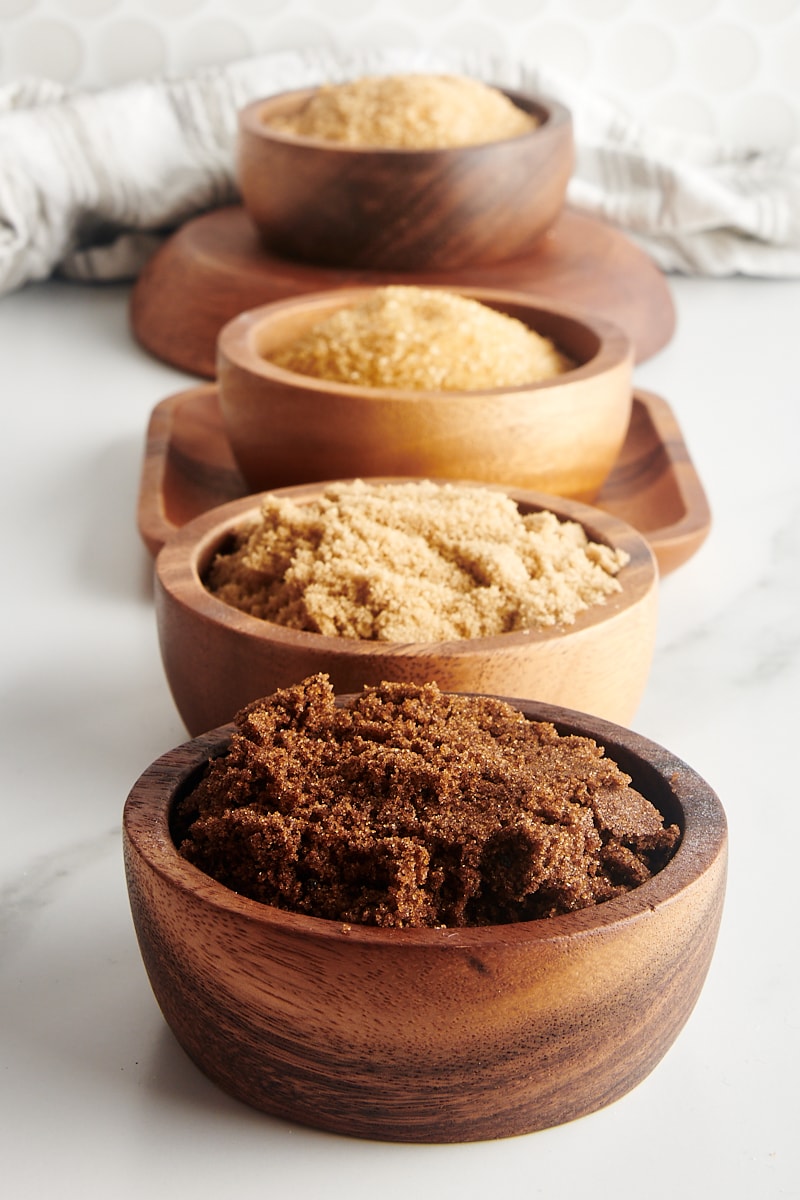
Other Types of Sugar
In addition to the basics, there are some other types of sugar you may encounter in your baking adventures.

Superfine Sugar
Superfine sugar, or caster sugar, is the same as granulated sugar except that the sugar crystals are very small. The small size of the crystals allows this kind of sugar to dissolve more easily. It is used frequently in delicate baked goods, such as mousses and meringues.
You can also make your own superfine sugar from granulated sugar. Learn how to do that here: How to Make Superfine Sugar
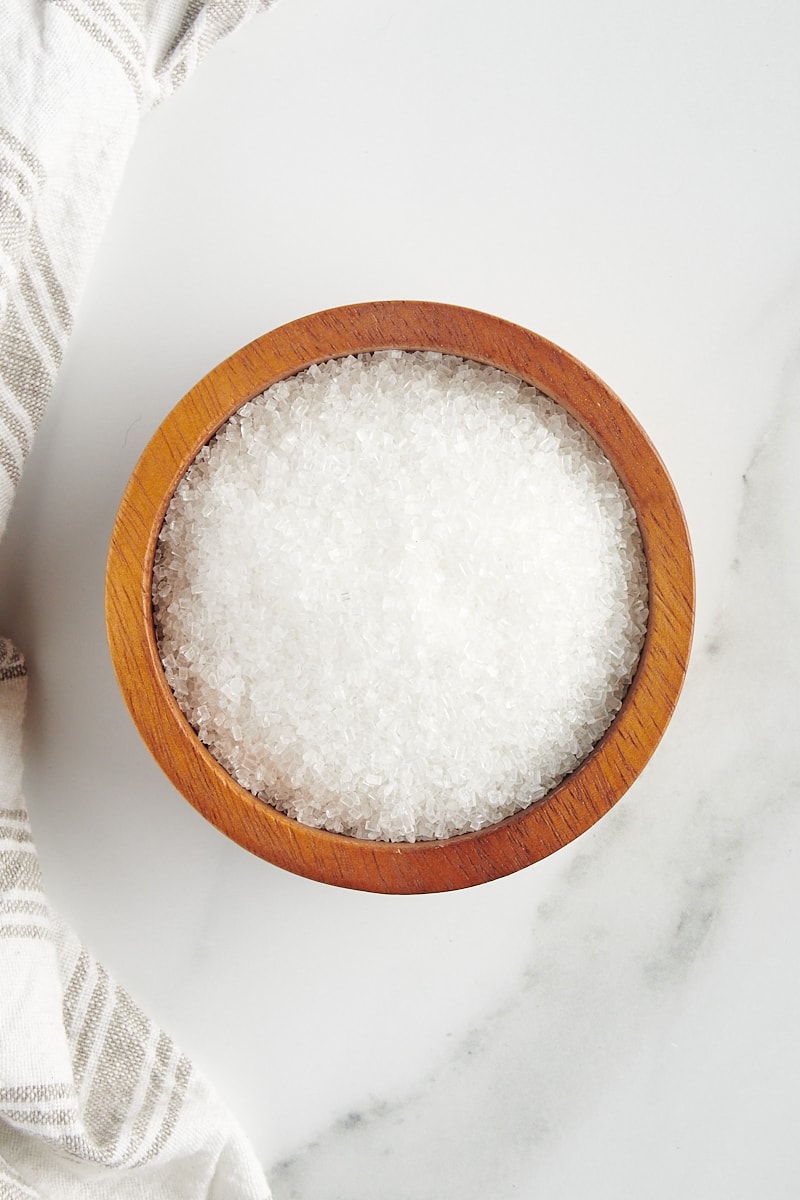
Sanding Sugar
Next up is sanding sugar, a granulated white sugar also known as coarse sugar or sparkling sugar. The crystals of sanding sugar are larger than other white sugars. It is most often not mixed into a batter or dough, but is used instead as a garnish. This type of sugar can be sprinkled on baked goods just before they go into the oven.
Because of their size, the crystals will generally not melt while in the oven. The large crystals will give baked goods a sparkling appearance because of the way light is reflected off the crystals. Sanding sugar is also available in various colors for decorating baked goods.
This is one of my baking pantry staples, as I love to add a sprinkle of this coarse sugar to baked goods before they go into the oven. It adds a bit of sparkle and an extra bite of sweetness that complements many recipes. In particular, it’s a great addition to muffins and quick breads.
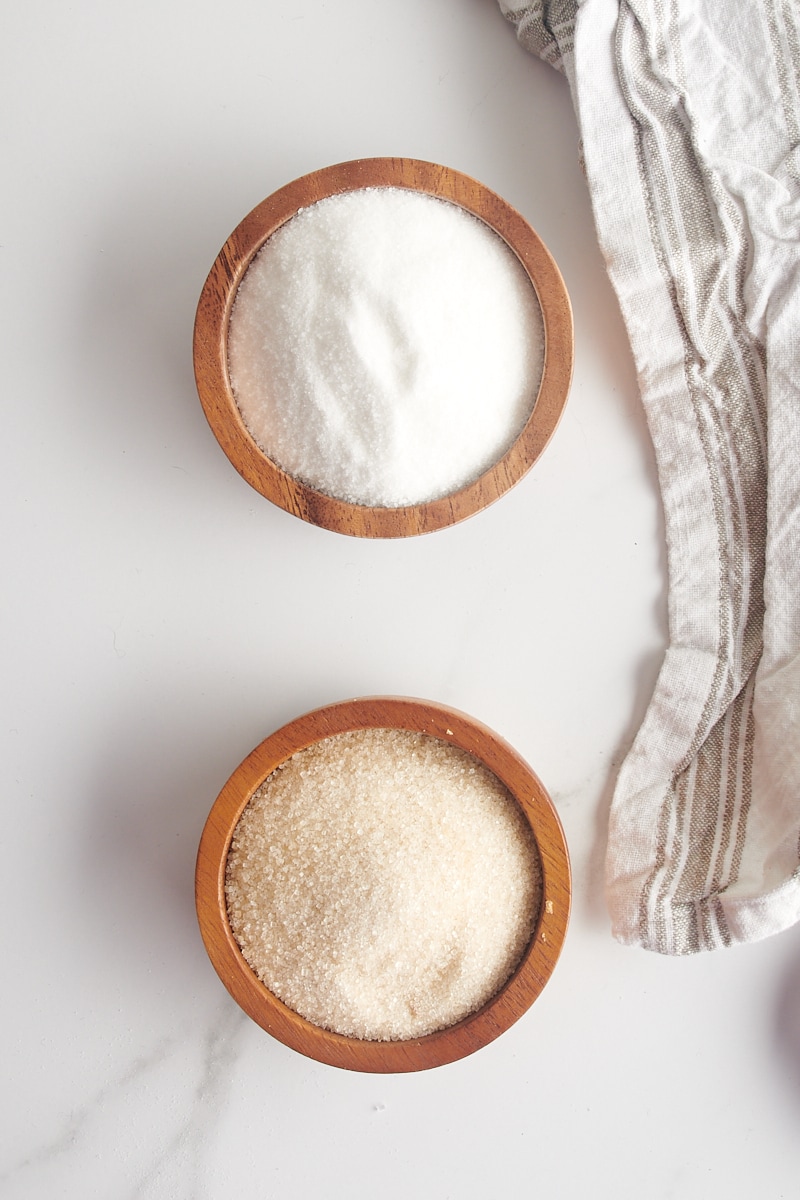
Cane sugar
Cane sugar is minimally processed exclusively from sugarcane. Its grains are a bit larger and darker than granulated sugar. It can generally be used as you would use granulated sugar.

Turbinado Sugar
Turbinado sugar is a type of raw sugar that has been partially refined. It is brown in color and has a large, coarse grain. Unlike brown sugar, its flavor leans more toward caramel than molasses. It can be used in lots of baking recipes (like these Banana Nut Muffins), and it also can be used like sanding sugar to add a sweet topping to your baked goods.
Demerara Sugar
Demerara sugar is a type of minimally processed brown sugar that has a large, coarse grain. It is dark brown in color and has a light molasses flavor. While it looks similar to turbinado sugar, it is larger and stickier with a stronger flavor. It is most often used in baking as a topping, like sanding sugar.
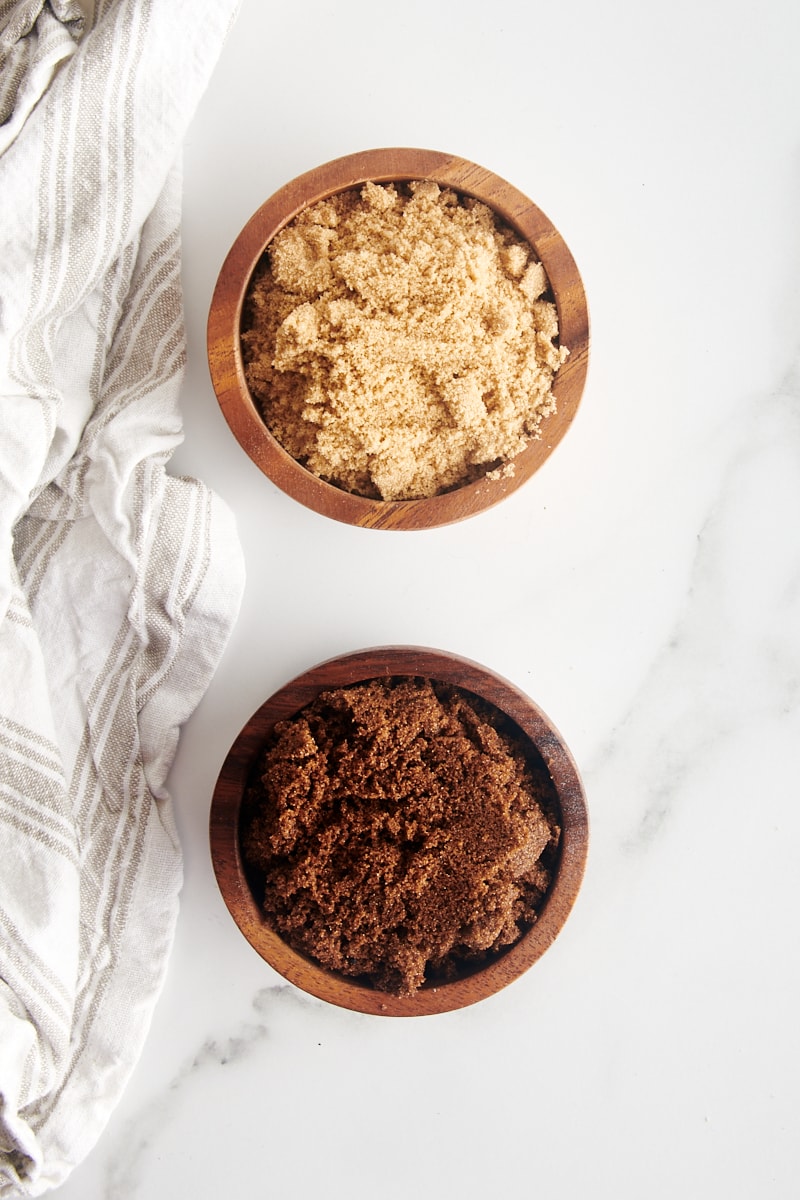
Muscovado Sugar
Muscovado sugar, or Barbados sugar, is a type of brown sugar that is made from unrefined sugar cane. It’s available in light and dark varieties, and has quite a strong molasses flavor. Technically, it can be used much like brown sugar, but the flavor is much, much stronger.

Pearl Sugar
Used similarly to sanding sugar, pearl sugar is a type of coarse sugar that is used to decorate the tops of cakes, cookies, and other desserts. It is white in color and has a hard texture. Unlike sanding sugar, the pieces are bigger and crunchier. It also doesn’t melt at high temperatures, so it holds its shape through the baking process.
Liquid Sugars
There are also a variety of liquid sugars available to home bakers. While there are lots of liquid sugar and sugar substitutes designed to be added to coffees and other drinks, let’s look at those that are used more frequently in baking.
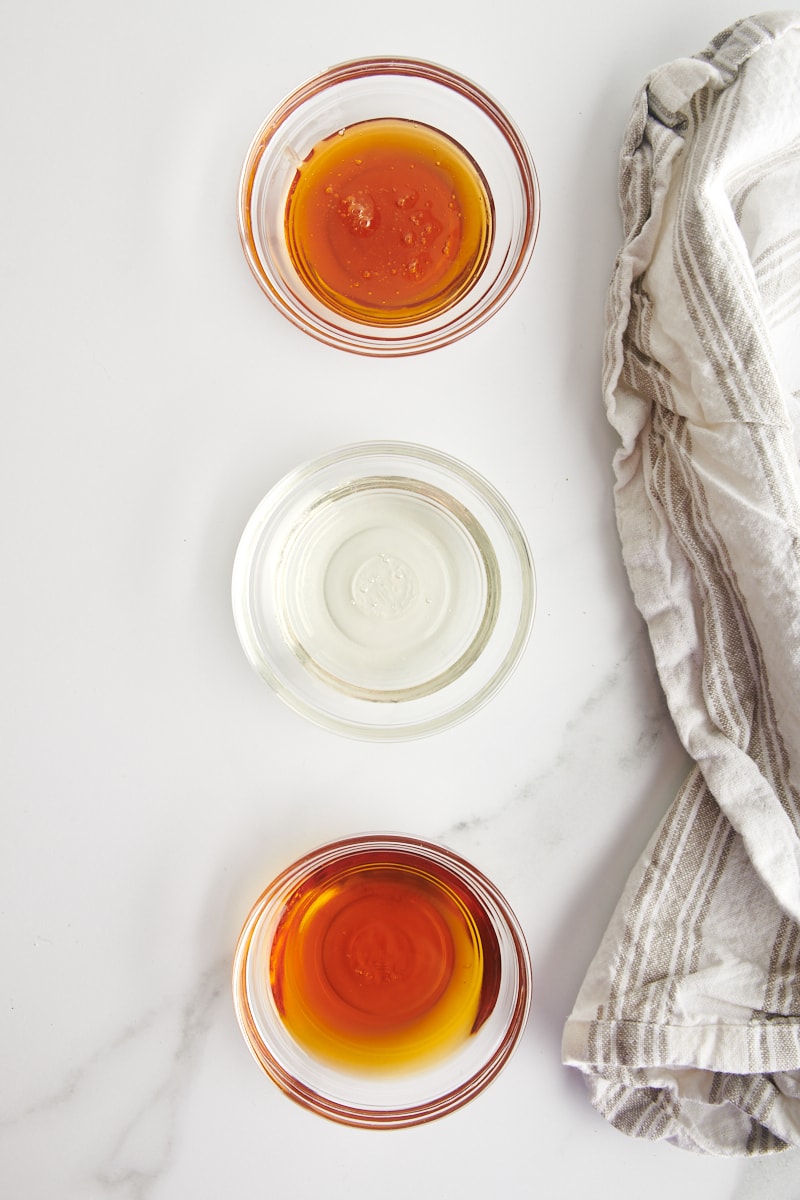
Honey
Honey is a sweetener made by bees from the nectar of flowers. It is golden in color and has a floral flavor. There are many different types of honey available, but the simple honeys available at grocery stores will suit most baking purposes. Honey’s subtle flavor makes it a nice addition to recipes like my Currant Oat Scones and Honey Oat Rolls.
Molasses
Molasses is a thick, dark syrup that is made from sugarcane or sugar beets. It has a strong flavor and is often used in recipes for gingerbread, cookies, and cakes. See my Gingerbread Cupcakes and Soft Ginger Molasses Cookies.
Corn Syrup
Corn syrup is a sweetener made from corn starch. Depending on whether it is light or dark corn syrup, it is clear or amber in color. Not to be confused with high-fructose corn syrup, corn syrup is often used in recipes for candy, cookies, and cakes. It can also be added as a stabilizer to things like ganache. Most of us are likely familiar with corn syrup from baking pecan pie, but it also works well to hold together Peanut Butter Corn Flake Bars and to make a more manageable dough for Almond Spice Cookies.
Agave Nectar
Agave nectar is a sweetener made from the agave plant. It is clear or amber in color and has a mild, honey-like flavor.
Maple syrup
Maple syrup is a sweetener made from the sap of maple trees. It is amber in color and has a distinct flavor. The bold flavor makes it less common for baking, but you can let that flavor shine in recipes like Maple Nut Muffins and Maple Ginger Cookies.
What Happens When You Change the Amount of Sugar in a Recipe
Sugar is a key ingredient in baking and its effects can be seen in many aspects of the finished product. The amount of sugar used in a recipe will affect the taste, texture, color, and shelf life of baked goods.
So as you might guess, altering the amount of sugar in a recipe can have many effects beyond just the sweetness level.
If you want to make a sweeter baked good, you can simply add more sugar to the recipe. This will also make the baked good more moist and tender. However, too much sugar can make a baked good overly sweet and can cause it to brown too quickly.
If you want to make a less sweet baked good, you can reduce the amount of sugar in the recipe. This will also result in a drier, tougher baked good. Too little sugar can also make a baked good dense and gummy.
Frequently Asked Questions
Granulated (white) sugar, brown sugar, and confectioners’ (powdered) sugar are the most common sugars used by home bakers.
You can make adjustments, but keep in mind that besides the flavor, you’re also affecting the texture, moisture level, and appearance.
Sugar provides sweetness for flavor, but it also affects the texture, moisture level, browning, stability, and appearance of baked goods.
Sugar is dry, but it is usually treated as a wet ingredient in baking. Mixing it with other wet ingredients allows it to absorb some of that liquid so that the flour that’s added later doesn’t absorb too much liquid and create tough, dry baked goods.





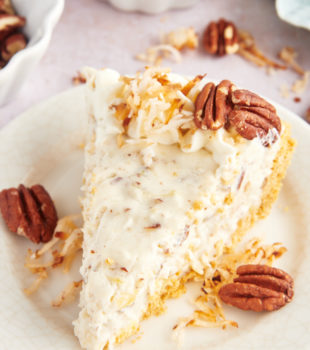



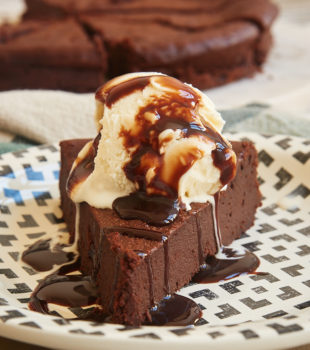

6 Comments on “Types of Sugar: A Home Baker’s Guide”
This was well done and very interesting! Thank you!
Thanks, Pam! I hope you’ll find it helpful.
I appreciate all the detail! Thank you
Thanks, Laurel!
What exactly is Show Sugar?
I’m not familiar with that term, Shawna. Sorry!